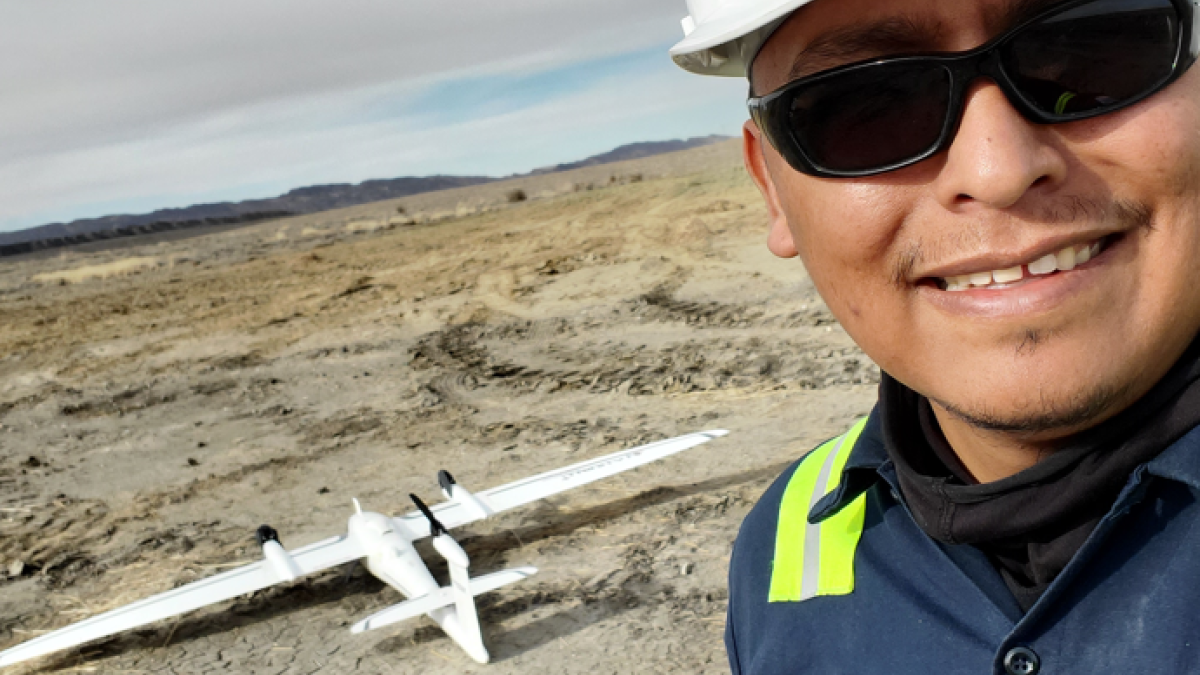ASU Online student aspires to use drone research to benefit Navajo Nation

Preston Toehe
From his home in the northwest corner of New Mexico, Preston Toehe spends his free time with his laptop open, reading about drones.
Toehe, a mining engineering technician on the Navajo Nation and ASU Online geographic information science (GIS) student in the School of Geographical Sciences and Urban Planning, spent the better half of last year conducting research to adapt the latest unmanned aerial systems technology into his employer’s mining operations.
Toehe identified specific technologies and processes that allowed the company to capture terrain and surface model data that helps improve overall efficiency, enhance safety and minimize environmental impact.
“I was interested in mapping, design, photography and making numerical data visual,” Toehe said of his interest to build on his professional experience and advance his formal education in GIS at ASU. “I want to use a GIS background and implement mapping designs to help progress the mining industry further and for land reclamation, to get the land back to the way it used to be or even better when handing it back to the Navajo Nation for better grazing.”
For his diligence in geographical surveying and commitment to better his community, Toehe was selected to receive one of five inaugural scholarships as part of the College of Liberal Arts and Sciences’ Online Undergraduate Research Scholars (OURS) program — a program that offers hands-on, experiential learning and research opportunities for students enrolled through ASU Online.
“The OURS program means more focused attention on providing our 100% online and remote students the same level of access to research experiences and skill sets as their on-campus counterparts,” said Kaelin Groom, instructor in the School of Geographical Sciences and Urban Planning who, together with Lecturer Andrew Trgovac, serves as a faculty representative for the school.
“As someone who teaches 100% remotely, I'm in a unique position to serve ASU's online population, and I have to say: They are incredible students. I have so much admiration and respect for them. So many of them work full time or have families, tons are active or reserve military, and they are each just so dedicated to getting their degrees. They work so hard — we owe it to them to work just as hard to make sure they are getting the most out of our program.”
Toehe lives in Farmington, New Mexico, with his family, where the nearest university is hours away.
“ASU Online made it possible for me to even attain a bachelor's degree. I can be in the middle of nowhere and as long as I have internet, I’m able to get an education,” Toehe said. “I just want to say, if you think a bachelor's degree is impossible, it's not anymore with the current technology of Canvas. You have school at your fingertips and access to the library and all the resources you want.”
Toehe sees his participation in the OURS program and his education as an opportunity to open up new doors while sharing his knowledge with others along the way.
“I'm getting this geographical information science degree to back up all my experience and give me another stepping stone to pursue a supervisory or managerial position,” said Toehe, who has previously earned associate's degrees in mechanical drafting and engineering technologies. “This is another extension of myself to become even more multi-disciplined in GIS, which can be applied in fields like city government or management of (Bureau of Land Management) tribal lands.”
“I also wouldn't mind using this experience to help new and up-and-coming students as a liaison for a program called Energy for the local community college here. That would probably be a dream job; using my experience to help out students.”
More Environment and sustainability

ASU President Michael Crow named to TIME100 Climate list
Arizona State University President Michael Crow has been named to the 2024 TIME100 Climate list of leaders and innovators driving…

Driving green desalination
Wilderness survival TV show hosts, pirates and water treatment researchers agree on one thing: Most natural water sources are not…

ASU preservation facility serves as test bed for rooftop heat mitigation
A roof coating that uses thermal energy storage materials from Arizona State University spinout EnKoat is halting the heat in…